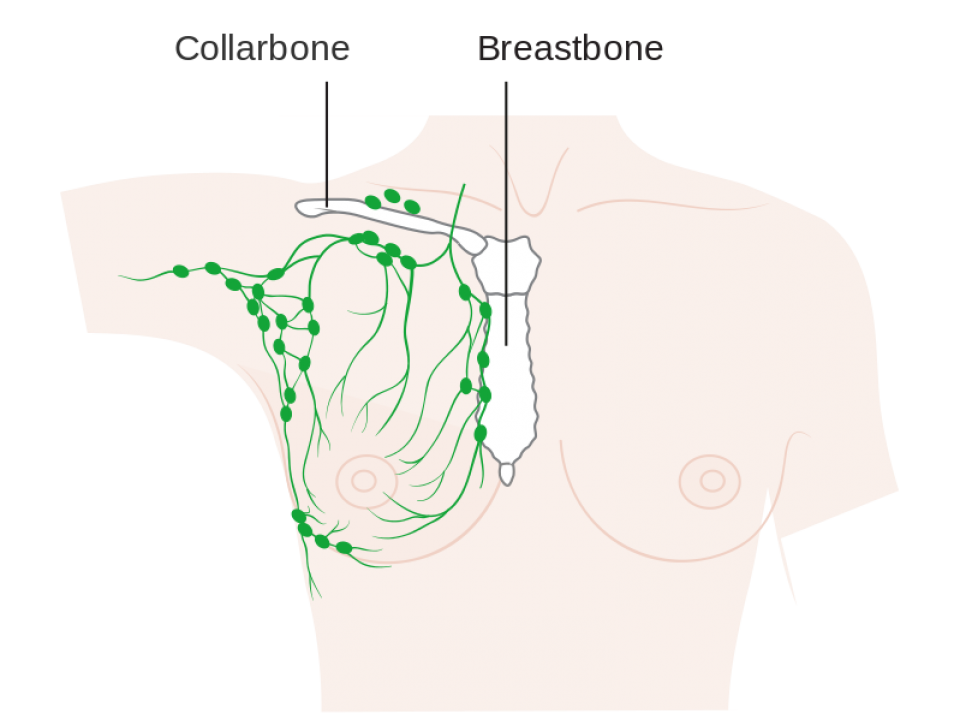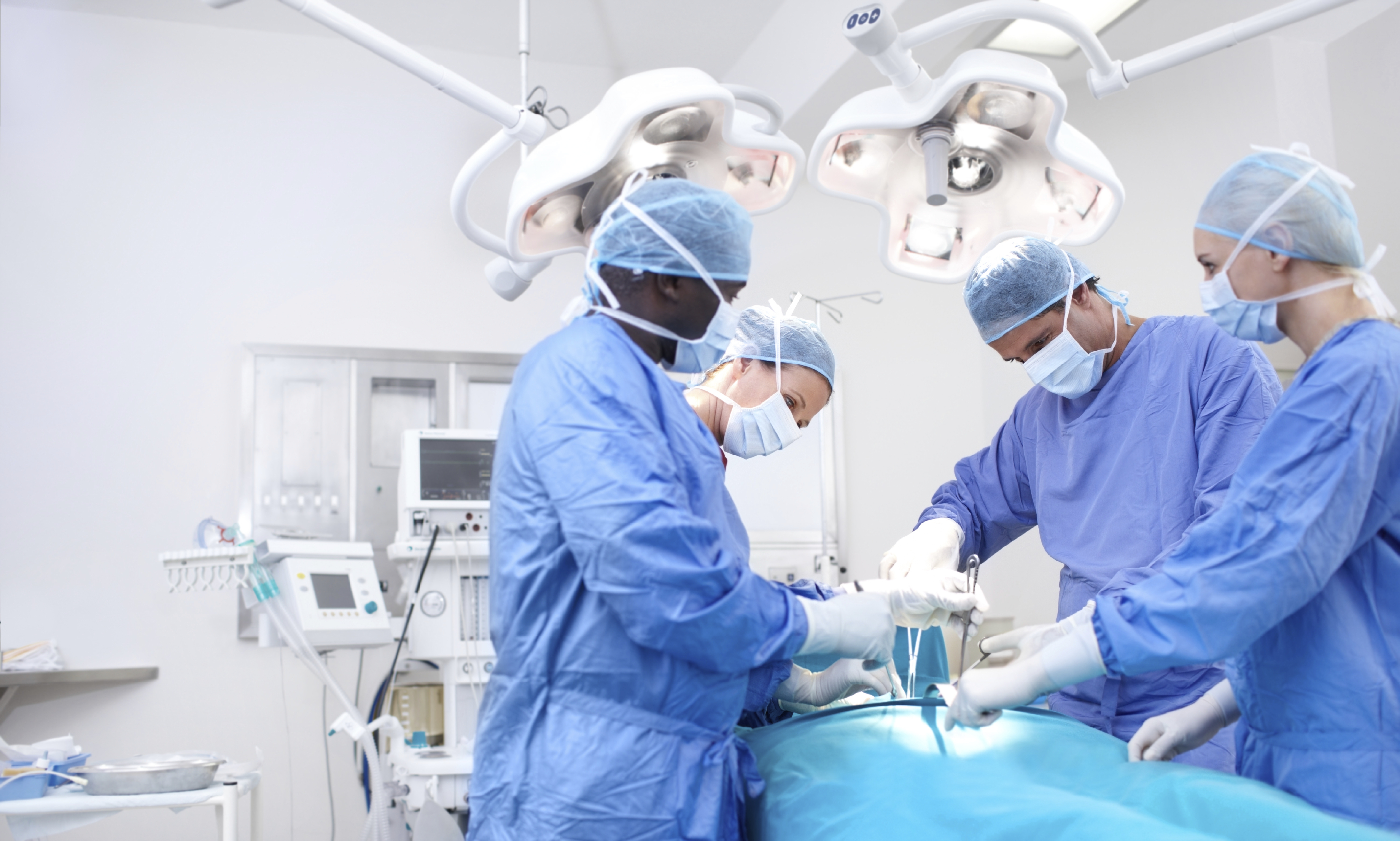Lymph node surgery for breast cancer


If breast cancer spreads, the first place it spreads to is the lymph nodes in your armpit. These lymph nodes will be checked for any signs of cancer, either before or during your breast cancer surgery.
It's important to know if the cancer has spread, as it will affect the treatment you will need.
(Image courtesy of CRUK / Wikimedia commmons)
Sentinel lymph node biopsy
The sentinel node is the first lymph node (or group of nodes) to drain fluid from the breast. It is the node most likely to contain cancer cells if the cancer has spread. Removing and examining the sentinel node and perhaps 1 or 2 other nodes can show if the cancer has spread, without having to remove all the lymph node.
How is a sentinel lymph node biopsy done?
- An injection of a small amount of dye into your breast, usually the morning of the operation or the evening before. The dye follows the path that the cancer cells would take from the breast through the lymphatic system.
- Pictures may be taken at time intervals after the injection.
- The sentinel node is removed under general anaesthetic, usually at the time of your breast surgery. Sometimes it's removed before surgery to guide your cancer treatment.
After sentinel lymph biopsy results
- The nodes removed are sent to the pathologist, who examines them to see if they contain cancer. This can take up to 10 days.
- If the lymph nodes are clear of cancer cells: You shouldn’t need to have any more lymph nodes removed.
- If the lymph nodes contain cancer cells: You may need more surgery to remove some more or all of the lymph nodes in your armpit. This usually happens about 2 weeks after getting the results. Or you may have radiotherapy to destroy the cancer cells instead.
Surgery to remove lymph nodes (axillary clearance)
If the doctors have found cancer in your lymph nodes, some more nodes will be removed. In some cases, most of the lymph nodes in your armpit will need to be removed. This is called an axillary clearance.
After surgery to remove your lymph nodes, a drain (tube) will be put in to take away lymph and other fluids for a few days. The drain will be removed when the amount of fluid flowing out has reduced.
For most people, this operation can be done without causing serious difficulty with shoulder movement, or arm swelling. A physiotherapist at the hospital will show you special arm exercises to help you recover.
Side-effects of removing lymph nodes
Soreness or numbness
The area under your arm will feel numb or sore for a while and you may experience some tingling or pins and needles. Taking painkillers regularly can help with any discomfort.
Lymphoedema
There is a small risk of swelling in your arm (lymphoedema). This can happen any time after the operation. If you notice any swelling in your arm, let your doctor know. Lymphoedema is easier to manage if it’s treated early. Read more about lymphoedema and how to manage it.
Scar tissue in the armpit (cording)
Some patients get a feeling like there is a tight rope or cord running from their armpit down their arm towards the hand after this surgery. This is called cording or banding. It can also be called axillary web syndrome. Cording can develop weeks or months after surgery.
Cording can be painful or it might make it difficult to move your arm. It usually gets better on its own after a few months, but tell your nurse if you have cording.
They can refer you to a physiotherapist or teach you exercises to help. Anti-inflammatory painkillers or massage may also help. Ask at the hospital if they can recommend a massage therapist.
For more information
Phone
1800 200 700




